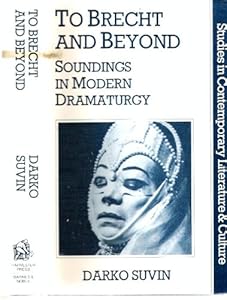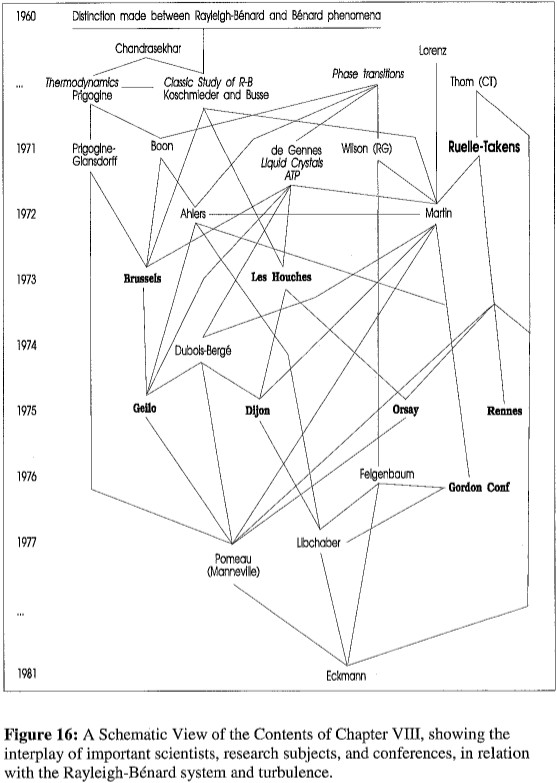David Aubin: A Cultural History of Catastrophes and Chaos: Around the Institut des Hautes Études Scientifiques, France 1958-1980 (1998)
Filed under thesis | Tags: · biology, catastrophe theory, chaos theory, history of mathematics, history of science, linguistics, mathematics, oulipo, physics, science, semiotics, structuralism, turbulence
“This is the story of a group of scientists who, in the local context of the Institut des Hautes Études Scientifiques (IHÉS), France, contributed to the elaboration of catastrophe theory and deterministic chaos theory. Starting with a study of the role of Bourbaki’s mathematics on the French intellectual scene (and especially with respect to structuralism), this dissertation examines the resources from topology, embryology, and linguistics used by René Thom to construct catastrophe theory.
It describes the foundation of the IHÉS by Léon Motchane in 1958 and the ideology of fundamental research that shaped it. It reviews the history of structural stability for differential equations, focusing on the work of Aleksandr Andronov and Solomon Lefschetz, among others, and the synthesis achieved in the 1960s by Stephen Smale at the University of California, Berkeley. These mathematical developments were used by Thom to develop new modeling practices. The IHÉS, which welcomed topologists such as E. Christopher Zeeman and Ralph Abraham, played a role in developing modeling practices based on recent advances in topology. A physics professor at the IHÉS, David Ruelle, together with Dutch mathematician Floris Takens, adapted the modeling practices of these ‘applied topologists’ and proposed a mechanism for the onset of turbulence, thereby introducing the concept of strange attractors. Looking at the history of fluid mechanics, I argue that Ruelle’s work displaced earlier emphases on fundamental laws, like the Navier-Stokes equations, and focused on the modes of representation rather than representations themselves. A certain Bourbakization of physics and the advent of the computer shaped this evolution.
Finally, focusing on convention, and taking the Rayleigh-Bénard system as a boundary system, various communities’ responses to the Ruelle-Takens model are examined, in particular hydrodynamic stability theorists, phase transition physicists and Pierre-Gilles de Gennes’s group, and chemical physicists orbiting Ilya Prigogine. Prior interest in developing interdisciplinary approaches for the study of turbulence helped the adaptation of a dynamical systems approach for the study of natural phenomena, greatly inspired by the work of Smale, Thom, and Ruelle.” (Abstract)
Ph. D. thesis
Princeton University
782 pages
single PDF (final section “Sources and Bibliography” missing; no OCR)
PDF chapters (from the author’s website)
Darko Suvin: To Brecht and Beyond: Soundings in Modern Dramaturgy (1984)
Filed under book | Tags: · aesthetics, drama, performance, theatre

In this collection of nine essays written between 1967 and 1977, Darko Suvin discerns the shape of a post-Individualist drama which may be to our age what the theatre of Shakespeare and Ibsen was to theirs. Suvin establishes the principles of composition of a crucial group of modern plays.
He examines some major attempts and failures to replace Ibsen’s “Individualist” theatre with the “Collectivist” drama. Two particularly important and original contributions to the subject are Suvin’s chapters on the Happenings in the United States and on the Paris Commune Theatre Law. The book focuses on the work of Brecht, both because of the importance of his plays and because of what Professor Suvin sees as Brecht’s central position today in any cultural critique that refuses to despair.
Publisher Harvester, Sussex, 1984
ISBN 0855279753, 9780855279752
283 pages
PDF (140 MB, no OCR)
See also Suvin’s The Use-Value of Dying (1996)
Theory, Culture & Society 30 (6), Special Issue: Cultural Techniques (2013)
Filed under journal | Tags: · cultural techniques, culture, media studies, media theory, philosophy of technology, technology

“This special issue is dedicated to Kulturtechniken (‘cultural techniques’), one of the most interesting and fertile concepts to have emerged in German cultural theory over the last decades. Our goal was to compile a collection that can serve as both archive and toolbox. For readers with a more historically-oriented interest in the multilayered past of the concept, we included important earlier proposals to define Kulturtechniken as well as more recent attempts to (re)write the history of the concept in light of current theory debates. For those more concerned with possible applications and implications, we encouraged contributors to apply their particular understanding of Kulturtechniken to new, sometimes unexpected, domains – from servants and swarms all the way to the basic reconfiguration of our understanding of time and machinic temporality. We are, in short, interested in unfolding the concept and probing its use value. Our two guiding questions are: What are cultural techniques? And what can be done with the concept?” (from the introduction)
Edited by Geoffrey Winthrop-Young, Ilinca Iurascu and Jussi Parikka
Publisher Sage, November 2013
ISSN 0263-2764
172 pages
Cultural techniques at Monoskop wiki (with source bibliography)
Publisher


